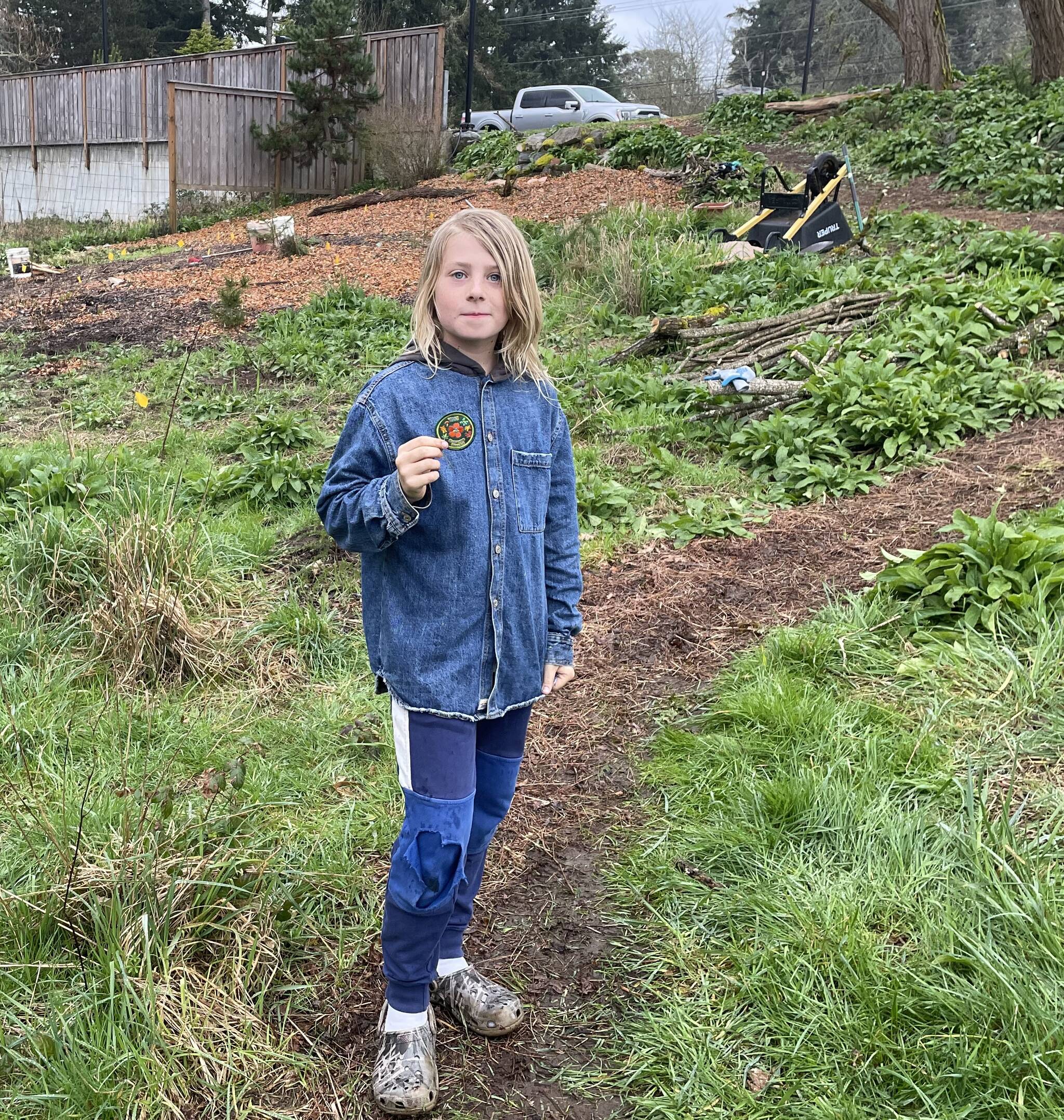At Heron Meadow, islanders are pulling weeds, laying mulch, and planting native species.
Restoration of this two-acre wetland just east of the Vashon Center for the Arts is part of an island-wide push to restore native habitats, uprooting one invasive plant at a time.
The meadow is stewarded by the Vashon Nature Center, whose restoration efforts are mirrored by groups such as the Vashon-Maury Island Land Trust, Vashon Park District and King County Conservation District. But it’s also a task any islander can take on in their own backyard.
High school senior Del Little-Lawing remembers when Heron Meadow was just a dense thicket of blackberries three years ago, when they first joined the restoration effort.
“It’s just really nice to see a meadow, and not just a forest of blackberries,” they said.
Little-Lawing volunteered at the March 21 work party, laying mulch and planting native Douglas’ spirea. Three years back, Little-Lawing cut down invasive blackberry bushes and covered the area with tarp to smother them and other stubborn invasive plants. (While Himalayan blackberries are invasive and omnipresent in the Pacific Northwest, native and delicious trailing blackberries can also be found in the wild.)
Along with blackberries, the meadow was overrun with stretches of reed canary grass and five-foot sticky weed, strong enough to drag down young trees.
Adria Magrath, the Heron Meadow steward for the Vashon Nature Center, leads much of this restoration work. She can be found at the meadow twice a week, often fielding questions about native plant restoration from curious passersby.
Heron Meadow is now a feature on the VCA’s annual garden tour, a stop where visitors learn to spot native and invasive species. Magrath says many attendees are homeowners looking for guidance on managing their property.
One technique Magrath recommends for cutting back invasive plants is sheet mulching: laying down cardboard and topping it with wood chip mulch. This method keeps invasive plants from resurfacing while improving the health of the soil for planting native species.
“When you restore a place with native plants, sheet mulching is probably the best, easiest method,” Magrath said. “Otherwise it’s just too much labor to try to manage all of the vegetation, all of the weeds.”
Magrath says that sheet mulch laid down in August will decompose into a healthy garden base by April.
To be classified as invasive, a plant must originate elsewhere, but also be capable of outcompeting against native species. Lemon balm, for instance, might take over a cultivated garden but won’t overtake natural habitat — making it non-invasive in ecological terms. Himalayan blackberries, on the other hand, can overrun gardens and forests alike, making the species damaging for a thriving native plant population.
Cultivating Heron Meadow has made Little-Lawing understand and appreciate native plants even more. Two of their favorites are the salmonberries and huckleberries they can forage on a walk.
For those new to cultivating native plants, Magrath suggests first getting to know what’s already growing in the yard: identify what species are prevalent and how they change with the seasons.
Washington state law requires landowners to eradicate some noxious weeds on their property to prevent them from spreading. King County’s Noxious Weed Control Program classifies the list of species by potential to spread and displace native plants. Though not on the Class A list, some common invasive species include green alkanet, Himalayan blackberries, bindweed, tansy and buttercup.
Magrath emphasizes that managing most invasive species isn’t about eliminating them entirely. She leaves some green alkanet in her garden, as it adds to her garden’s diversity and attracts bees, she has noticed. Since it can easily take over, she weeds it back once a year or cuts it before it goes to seed, allowing it to have some space, but not take over.
“It’s about allowing other things space to thrive,” Magrath said. “I’m never going to eradicate the invasives. It would be unrealistic for me to think that I could do that entirely.”
Mari Kanagy is a contributing journalist to The Beachcomber.


